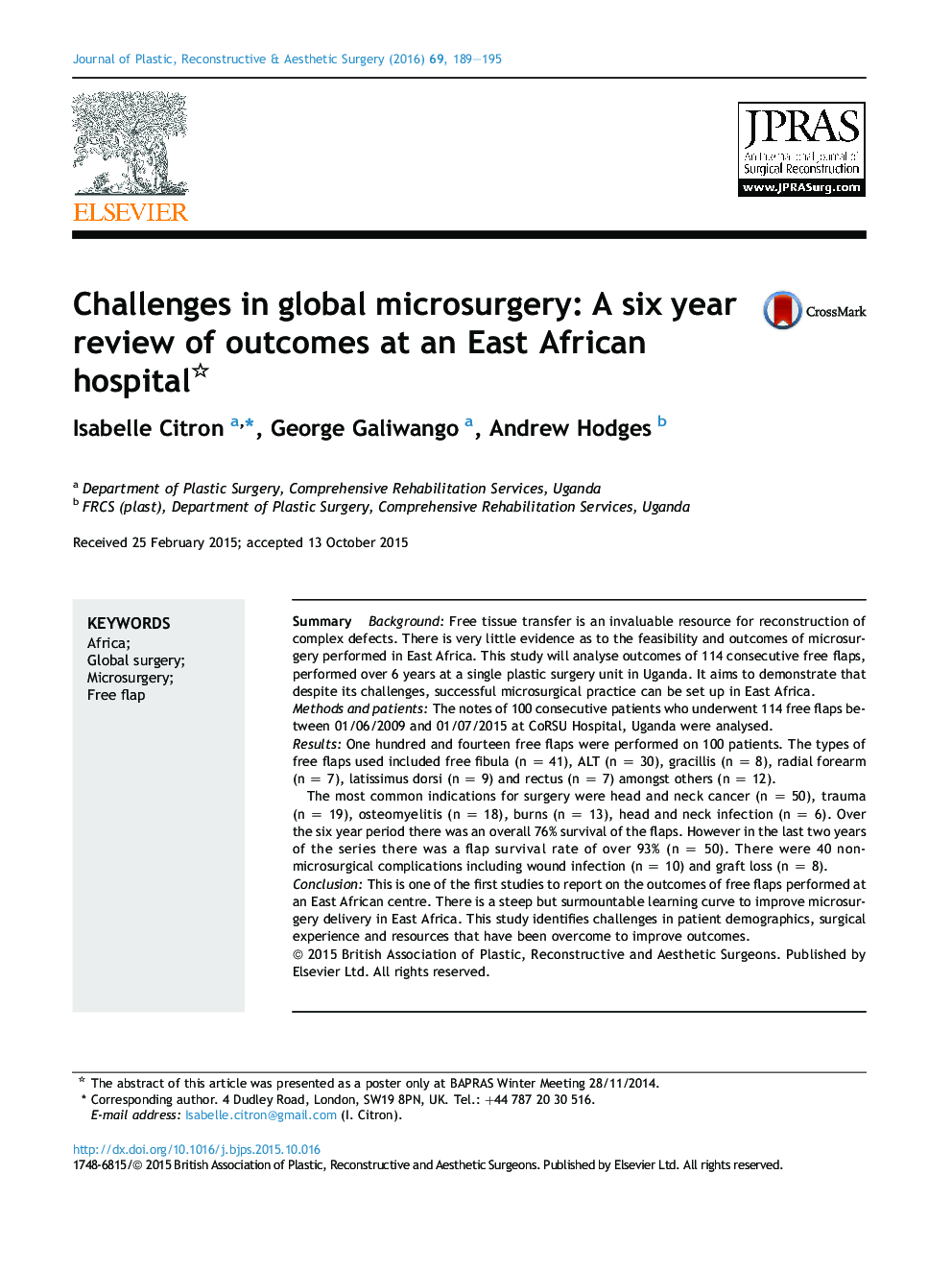| Article ID | Journal | Published Year | Pages | File Type |
|---|---|---|---|---|
| 4117314 | Journal of Plastic, Reconstructive & Aesthetic Surgery | 2016 | 7 Pages |
SummaryBackgroundFree tissue transfer is an invaluable resource for reconstruction of complex defects. There is very little evidence as to the feasibility and outcomes of microsurgery performed in East Africa. This study will analyse outcomes of 114 consecutive free flaps, performed over 6 years at a single plastic surgery unit in Uganda. It aims to demonstrate that despite its challenges, successful microsurgical practice can be set up in East Africa.Methods and patientsThe notes of 100 consecutive patients who underwent 114 free flaps between 01/06/2009 and 01/07/2015 at CoRSU Hospital, Uganda were analysed.ResultsOne hundred and fourteen free flaps were performed on 100 patients. The types of free flaps used included free fibula (n = 41), ALT (n = 30), gracillis (n = 8), radial forearm (n = 7), latissimus dorsi (n = 9) and rectus (n = 7) amongst others (n = 12).The most common indications for surgery were head and neck cancer (n = 50), trauma (n = 19), osteomyelitis (n = 18), burns (n = 13), head and neck infection (n = 6). Over the six year period there was an overall 76% survival of the flaps. However in the last two years of the series there was a flap survival rate of over 93% (n = 50). There were 40 non-microsurgical complications including wound infection (n = 10) and graft loss (n = 8).ConclusionThis is one of the first studies to report on the outcomes of free flaps performed at an East African centre. There is a steep but surmountable learning curve to improve microsurgery delivery in East Africa. This study identifies challenges in patient demographics, surgical experience and resources that have been overcome to improve outcomes.
